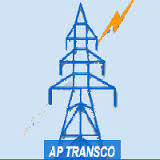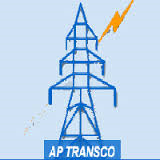Risk Based Non-Conformity and CAPA Management
Risk-based non-conformity and Corrective and Preventive Action (CAPA) management integrates risk management principles into the identification, assessment, prioritization, and resolution of non-conformities within an organization's processes, products, or services. This approach ensures that resources are allocated effectively, focusing on areas with the highest risk of impact on quality, safety, compliance, or other organizational objectives.
Here's an overview of each:
-
Non-Conformity Management:
-
Identification: Non-conformities are instances where products, processes, or systems do not meet specified requirements, standards, or expectations. These can be identified through various means, such as internal audits, customer complaints, inspections, or monitoring processes.
-
Evaluation: Non-conformities are evaluated to determine their severity, impact, and root causes. This evaluation helps prioritize corrective actions and preventive measures based on the level of risk posed by each non-conformity.
-
Documentation: Non-conformities are documented and recorded in a non-conformity register or database. Documentation includes details such as the nature of the non-conformity, its root cause, the affected product or process, and any immediate actions taken.
-
Root Cause Analysis: Conducting root cause analysis is essential to identify the underlying reasons for non-conformities and prevent recurrence. Techniques such as the 5 Whys, Fishbone (Ishikawa) diagrams, and fault tree analysis are commonly used to identify root causes.
-
Corrective Actions: Corrective actions are developed and implemented to address identified non-conformities effectively. These actions aim to eliminate the root cause of the non-conformity and prevent its recurrence. Corrective actions may include process improvements, rework of non-conforming products, or changes to procedures or documentation.
-
-
CAPA Management (Corrective and Preventive Action):
-
Corrective Actions: Corrective actions are taken in response to identified non-conformities to eliminate their causes and prevent recurrence. Corrective actions address issues that have already occurred, aiming to correct deviations from requirements or standards.
-
Preventive Actions: Preventive actions are proactive measures taken to prevent potential issues from occurring in the future. These actions aim to identify and eliminate the root causes of potential non-conformities before they occur, thereby reducing the likelihood of recurrence.
-
Implementation: Corrective and preventive actions are implemented according to predefined procedures and timelines. Responsibilities are assigned, and action plans are developed to ensure timely and effective implementation.
-
Verification and Validation: After implementation, the effectiveness of corrective and preventive actions is verified and validated. This involves confirming that the actions taken have addressed the root causes of non-conformities and that there is evidence to support their effectiveness.
-
Monitoring and Review: CAPA processes are continuously monitored and reviewed to ensure their effectiveness. Lessons learned from corrective and preventive actions are used to improve processes, systems, and procedures continually.
-
Documentation and Reporting: All CAPA activities, including the identification, investigation, and resolution of non-conformities, as well as the implementation and verification of corrective and preventive actions, are documented and reported as part of the organization's quality management system.
-
By effectively managing non-conformities and implementing robust CAPA processes, organizations can improve product and process quality, enhance customer satisfaction, and drive continuous improvement across their operations.
For a free copy of risk based Non-Conformity and CAPA software send your request by filling the form in this page





























































